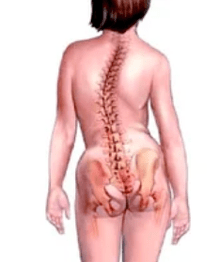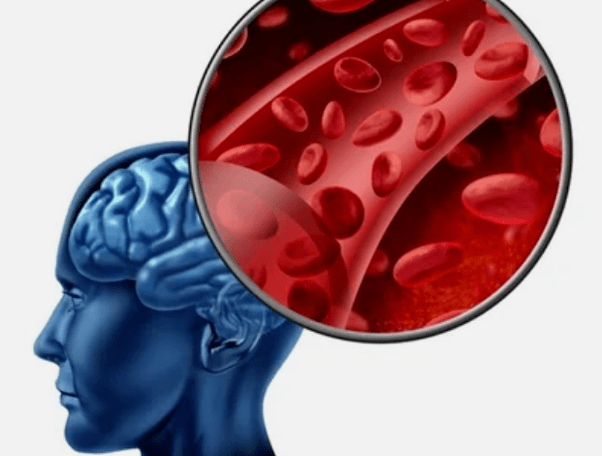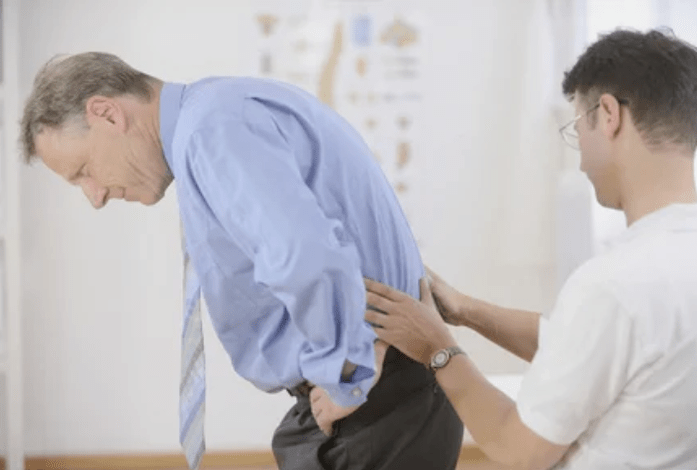The osteochondrosis of the cervical region is a serious pathology, which is characterized by degenerative-plastic changes in the structure of the intervertebral disc. This violation often leads to dangerous complications. Therefore, it is strictly forbidden to ignore it. To cope with the disease, you should consult a specialist in a timely manner.

The essence of the pathology
The cervical spine osteochondrosis is a pathology in which the soft intervertebral pulp is transformed into bone tissue. This causes pinch of blood vessels and nerve fibers.
The characteristic features of the disease include pain syndrome. Local located on the neck, shoulders, upper spine, head. Many patients have faced dizziness, pressure fluctuations, vomiting, lack of air.
Distribution changes in the area of the cervical region are usually found in middle and old age. This is due to the vertical position of the skeleton and the load distribution features.
Doctors notice that the disease earlier occurs in men. This occurs in 45-50 years. Women face the manifestations of cervical osteochondrosis later-in 50-55 years.
Reason
A variety of factors lead to the development of this form of the disease. The main causes of cervical osteochondrosis include the following:
Insufficient physical activity. People who lead an inactive lifestyle have the impoverishment of the back muscles that support the spine. Deposition of salts that appear due to lactic acid can worsen this state of things. The weakened spinal column is easily deformed and becomes less mobile.
Overweight the appearance of excess weight is a major risk to the muscular system. In addition to increased loads on the back, adipose tissue receives beneficial substances required to maintain muscle tone and cartilage tone.
Long stay in a moveless position. This disease is often found in drivers and people who are engaged in intellectual work. After an extended stay in a stingy state, the cartilage fabrics gradually lose elasticity. Over time, the intervertebral discs gain an unnatural configuration.
Disordishes food disorders. In order for the body to function properly, proteins, fats, minerals and vitamins must be present in the diet in sufficient quantities. Irrational nutrition provokes a violation of the tissue structure and leads to their rapid destruction.
Damage to the back. This can cause redistribution of cartilage pressure, which provokes a change in their structure and shape.
Pathology of the musculoskeletal system. This category includes scoliosis, rheumatism, bone tuberculosis.
Often, cervical osteochondrosis is the result of an inherited tendency. In this case, the pathology develops without the influence of important factors.
To prevent the appearance of the disease, you need to start therapy in a timely manner.

The stages of the disease
There are several stages of pathology, each of which is characterized by several traits:
The first - the main feature of the state is the instability of the spine. It manifests itself in the initial lesions of the intervertebral discs;
Second - the main manifestation is extension. This condition is characterized by a decrease in cracks between the vertebrae, a gradual violation of the integrity of the fibrous ring. Often there is pain caused by nerve compression;
Third - at this stage, the fibrous ring is completely destroyed. This includes the appearance of intervertebral hernia. This condition is characterized by severe spinal cord damage;
The fourth is the most difficult. At this stage, at any move, acute pain occurs. Sometimes the condition improves, but this indicates the appearance of bone structures that connect the beads. This requires a decrease in motor activity and provokes disability.
Symptoms
This form of osteochondrosis is characterized by special manifestations. This is due to the close location of the cervical vertebrae and the low height of the disc. Therefore, even small changes provoke serious manifestations. Moreover, this form of osteochondrosis is often associated with compression of cerebrospinal roots.
Symptoms of cervical osteochondrosis include the following:
Pain they are localized in different areas - the back of the head, neck, shoulder band, hands. The discomfort in the hands or shoulder band is due to a pinch of the nerves. Pain syndrome in the occipital area is associated with spasms of neck muscle tissue and circulatory disorders.
Weakness in the hands. This sign is due to damage to the motor nerves responsible for intriguing the wrist muscles.
Weakening sensitivity in the hands. This feature is due to damage to the roots, which include sensitive fibers responsible for intriguing the skin of the hands.
Reduce the motor activity of the neck, the appearance of the cramp. Such symptoms of cervical spine osteochondrosis become the result of a decrease in the height of the disc. They are also defeated by the intervertebral joints and the formation of bone growth in the beads.
Weakness, loss of coordination of movements and dizziness. These manifestations are due to damage to the vertebral artery. Fibrous tissue formation and vertebral displacement provokes problems with blood flow to the arteries. As a result, there is a deterioration of blood flow to the occipital area of the brain and brain.
Determination of hearing, numbness of tongue, weakening visual acuity. These symptoms of osteochondrosis of the cervical spine are due to the worsening of the situation and the progression of cerebral circulation disorders.
Diagnostic methods
To identify neck osteochondrosis, you must perform a number of diagnostic procedures.The most informative studies include the following:
The image of magnetic resonance is the most informative study that allows you to evaluate the state of the beads and discs between them. Also, with the help of this procedure, it is possible to detect hernia, evaluate their size and localization.
X -Ray - this procedure is one of the most affordable research methods. However, it often becomes non -information, especially in the last stages of the disease.
Calculated tomography - allows you to identify the presence of changes in the vertebra structure. However, the presence of hernia or compression of the spinal cord to diagnose thus is quite difficult.
Duplex ultrasound scan - helps detect blood flow disorders in vertebral arteries. The procedure allows you to detect obstacles and a slowdown in blood flow to the vessel.
Treatment methods
The treatment of cervical osteochondrosis is chosen taking into account various factors. This is done depending on the stage of the disease, the form of the disease, the severity of the symptoms.
The main methods of therapy include the following:
Conservative therapy - can be medicine and not -drug;
Surgical intervention;
A combination of conservative methods and surgical treatment.
Methods of physiotherapy
Treatment of cervical back osteochondrosis necessarily requires the use of major methods of physiotherapy.
The most effective procedures include the following:
Electrophoresis using medicines. Under the influence of electricity, the particles of the medication penetrate the desired area. Eufliin and Novocaine are used for the procedure. Thanks to this, it is possible to stimulate blood circulation and achieve an analgesic effect.
Ultrasound exposure. Thanks to this procedure, it is possible to withstand the pain and stop inflammation. This technique also activates metabolic processes in the body.
Magnetotherapy. With its help, it is possible to cope with edema and achieve an analgesic effect.
Laser exposure. This method helps to normalize blood circulation and helps cope with inflammation.
The most effective exercises should include the following:
Lie on your stomach, rest your hands on the floor, raise your head and toasted. It is worth ensuring that the rear remains straight. In this position, it is necessary to stay for 1-2 minutes. Then sink carefully on the floor. Do 2-3 repetitions.
Lie on the stomach, stretch your hands, turn your head to the left side and touch the ear on the floor. Similar movement to perform on the right. Do 6-7 times in each direction.
Sit and, breathing, bend. Tap the chest with a beard. After that, draw, deviate back, throwing your head back. Perform 10-15 repetitions.
Sit down, put your palms on your forehead. Press your head to your arms for 30 seconds. In total, you need to make 2-3 repetitions.
Slowly rotate your head in different directions. In each direction, you need to make 10 rotations. When dizziness occurs, the exercise must stop.

Massage
To eliminate signs of cervical osteochondrosis, you definitely need to do a massage. The procedure should be performed as much as possible, without effort. The movements should extend to the neck, collar sit and the rear area.
It is better to massage in a stomach position.In extreme cases, the procedure is reduced.
The technique is based on the use of such techniques:
Stroking - implies impact on surface areas of the skin. To do this, the palms of your hands or fingertips must hit your back, moving from the head to the upper third of your back. You can also make zigzag movements.
Squeezing - consists of effects on deep areas of the skin on the upper third of the back. To do this, with the thumb and thumb, the skin is caught. This should be done very carefully, without affecting the fabrics in the vertebral area.
Friction - The procedure is performed to heat the skin and increase blood circulation in the collar region. It should be done very carefully, without affecting the spinous sections of the vertebrae.
Joy - is quite rare, as it implies the effect on deeply placed fabrics. This can only exacerbate one abnormality.
With osteochondrosis, itself -the size can be performed.To do this, it is appropriate to lower and use the methods of stroke and rubbing the neck and shoulders. It is advisable to complete the procedure with rubbing ointments that contribute to increased blood flow and relieve pain in the affected area.
Surgical treatment
Performing surgical intervention is indicated in the following cases:
The presence of neurological deviations is a violation of motor activity, weakness or loss of hands sensitivity, loss of control over defecation. When such symptoms appear, you may suspect a constant damage to the nerves. Therefore, it is so important to perform the operation to eliminate compression.
The presence of persistent pain, which violates a person's quality of life and cannot be eliminated by conservative methods.
With the development of cervical osteochondrosis, the following operations may be performed:
Anti -cervical dyscoktoma and spondylodesa. The operation is performed through the front surface of the neck. The procedure is aimed at removing the affected disk, decompression of nerve fibers and implanting a special device to maintain the desired distance between the vertebrae.
Replacing the intervertebral disc. In this case, the affected disk is removed, and rather inserted artificial. Thanks to this procedure, it is possible to maintain motor activity.
Performing surgical interventions to eliminate neurological symptoms has high efficiency. According to separate estimates, it is 80-90 %. However, such methods are not effective enough when eliminating the pain associated with osteochondrosis.
Potential risks
Cervical osteochondrosis is a serious type of pathology. In this area of the spine, there are many nerves and vessels responsible for brain nutrition. In addition, cervical vertebrae fit tightly. Therefore, even small changes in this area provoke squeezing or displacement of blood vessels and nerves.
Disordisms of the cerebral blood flow provoke the appearance of migraines, vegetic dystonia, hypertension. There is also a risk of problems in the functioning of the respiratory system, heart and blood vessels. Many people are disturbed by hearing, visual acuity decreases, coordination of movements suffers.
In difficult situations, cervical osteochondrosis provokes vertebral artery syndrome. This vessel is responsible for blood supply to the brain and an extended brain. With the compression of the artery, there is a risk of brain ischemia and the development of spinal cord.
Also, pathology can provoke damage to the nerve roots. This is manifested in the form of growth formation, the appearance of radiculopathy, loss of motor activity. The most difficult consequence of the disease is the compression of the spinal cord, which can lead to a fatal outcome.
PREVENTION
To avoid developing pathology, it is worth observing simple rules:
Systematically play sports;
Eat properly;
Take vitamin preparations and chondroprotectors prescribed by a physician;
Avoid a long stay in an unpleasant position;
Use orthopedic furniture;
Choose clothes and shoes for the season, especially in winter.
Cervical osteochondrosis is a very dangerous disease that can lead to negative health consequences.
To avoid serious complications, you should consult a doctor in a timely manner and follow his recommendations clearly.




























